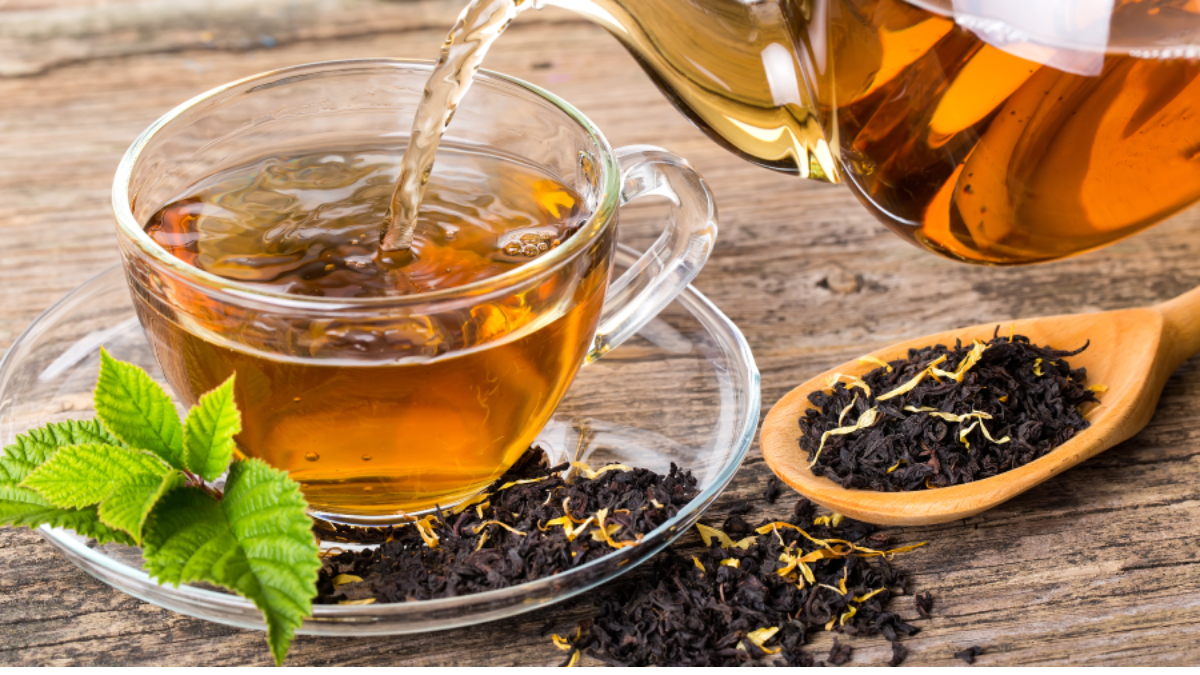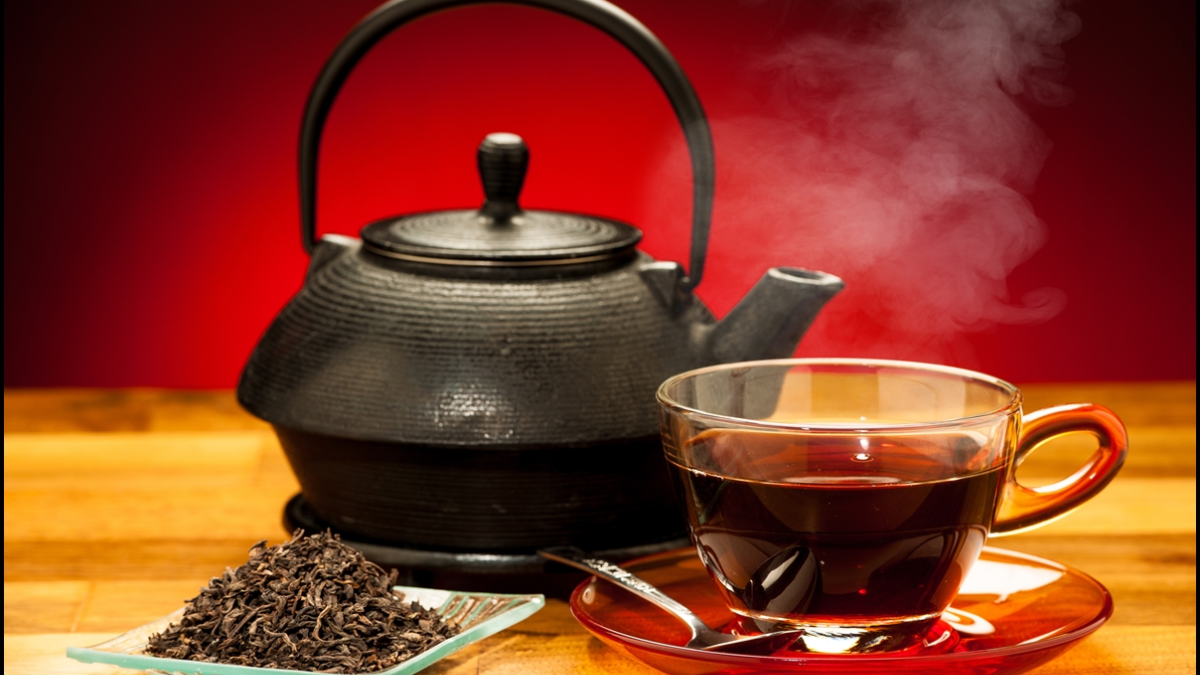Black tea can have an amber to reddish brown colour when brewed properly. It helps you get out of a slump and instantly gives you energy. Second only to water in terms of popularity, black tea is the most consumed beverage worldwide. Black tea can be made in various ways, frequently without milk and with water and tea powder. If you’d prefer, you can add sweetener; alternatively, you can eliminate it. Although adding very little sugar is recommended, you can do so if you’d like, as I have. I occasionally eat it even though I wouldn’t say I like it.
What is Black Tea?
In Western culture, black tea is frequently mentioned when discussing tea in general. Black tea is commonly used to make well-known tea varieties such as sun tea, sweet tea, iced tea, and afternoon tea. Even the famous Earl Grey and English Breakfast mixes are created with black tea leaves. This contrasts with Eastern culture, where green tea is commonly referred to as tea in nations like China and Japan. What distinguishes black tea from green tea, then? How did black tea become to be so well-liked in the West?
Tasting Black Tea
Western palates are accustomed to robust black tea that withstand sugar, cream, or copious amounts of ice. Thus, black tea’s quality and diversity weren’t long considered great value in the West. More crucial was mass production to supply the demand for tea. However, as consumers gain more knowledge about the tea industry, demand for premium, artisan, loose leaf teas is growing. Diversity, freshness, and flavour have emerged as crucial differentiators when deciding which black tea to sip.
Remember, not all black teas have the same flavour when selecting one to sip. Similar to fine wine, each black tea has a unique flavour profile that depends on a variety of factors, such as where it was grown, whether it was close to other plants that influenced its flavour (such as rose bushes or coffee plants), the climate it grew in, whether it was fertilized naturally or with chemicals, how long the leaves were allowed to oxidize when processed, what kind of heat treatment the leaves received to stop oxidization, and whether the leaves were dried or not.
Below are the Health Benefits of Spiced Black Tea
- a source of antioxidants
- enhances gut health and metabolism
- assists with weight loss
- suitable for the skin, hair, and heart
- Increasing your energy
- Black pepper treats sore throats and uneasy stomachs.
- Antioxidant-rich green cardamom helps treat colds.
- Improved liver health due to clove
- Cinnamon maintains blood pressure balance.
- Cough and flu are treated with star anise.
Preparing Black Tea
Because many black teas have varied ideal brewing temperatures and steeping durations, it is best to consult your tea vendor for brewing instructions particular to the tea you purchased. Observe the following general advice when boiling black tea:
- Use filtered, cold, fresh water. The best water is spring water.
- Black teas are usually brewed for extended periods and at higher temperatures than green teas. Typically, this is done for 3 to 5 minutes at a temperature between 200 and 212 degrees.
- If you don’t have a temperature-controlled electric kettle, keep in mind that water simmers at 190 degrees and boils at 212 degrees at sea level. For every 100 feet of altitude elevation, the boiling temperature decreases by around one degree. Therefore, brewing black tea should be made just off a rolling boil.
- If your black tea came with brewing instructions, follow them. However, it is safe to use roughly 2 grams of loose leaf tea per 8 oz. cup of water.
- Cover your tea as it steeps to keep all the heat in the steeping pot.
- Avoid over brewing your tea! The bitterness and astringency in your tea will release more quickly the longer it steeps. After steeping your tea for the advised amount of time, taste it to see if you’d prefer it to steep a little longer.
- The majority of premium loose leaf black teas can be brewed several times.
- The majority of black teas are robust enough to withstand milk and sugar. But try drinking pure black teas without any additions to appreciate the subtle flavour variations among the different types.
Ingredients
- 2 cups of water
- Black tea or chai Patti: 12–1 teaspoon, to taste
- Laung/cloves: 4-5
- Kala Mari (black peppercorn): 4 to 5
- 1-inch cinnamon stick or dalchini
- Elaichi green cardamoms, two pods
- Chakri Phool/star anise – 1
- Lemon Juice, optional and to taste
- Honey or jaggery, optional, and to taste
Instructions
- Use a kettle or a pan to boil water.
- Reduce the flame as the water begins to boil.
- Add whole spices and black tea/tea bags.
- Get rid of the heat.
- For ten to fifteen minutes, cover the pan and set it away.
- Discard the spices and tea bags after the tea has steeped or strain it.
- The fundamental variation of spiced black tea is prepared here.
- Lemon juice, honey, or jaggery can optionally be added, depending on the flavour.
- Black tea with spices can be served hot or cold.
Is it OK to Drink Black Tea Every Day?
For most people, moderate black tea consumption (approximately 4 cups per day) is probably safe. It may not be safe to consume more than 4 cups of black tea daily, and large amounts of drinking could have adverse effects because of caffeine. Including black tea in your daily routine is a simple method to increase your dietary intake of antioxidants and maybe lower your chance of developing future health issues. Flavonoids included in black tea have heart-healthy properties. The tannins may soothe the intestinal tract in black tea, which might lessen diarrhea and upset stomach.
Additionally, a study published in Food Reviews International suggests that drinking black tea regularly may help maintain a healthy bacterial balance. The precise amount of tannins in tea might vary greatly depending on the variety and preparation method. However, staying within a range of 3 cups or less (710 ml) per day is probably safe for most people.
Do you Add Milk to Black Tea?
Any robust black tea would be a suitable option for adding milk, but we advise tasting each tea first without any outside ingredients to get a true sense of how it tastes. If you opt to add milk after tasting, fantastic! Tea should be savoured however you like. However, make sure to taste them first without the milk. It is best to drink black tea or tea without milk. Tea without milk is healthy, and too much sugar in tea is not good either. Tea has anti-inflammatory characteristics that help shield you from hazardous diseases like cancer, but numerous studies have shown that milk tea might harm your health.
Black tea can be sipped alone or, if you’d like, combined with milk or lemon. Earl Grey is frequently used with lemon because it enhances the citrus notes. Black tea with milk is a traditional British practice. However, why not try adding some spice and brewing your own Spiced Indian Chai if you want to warm up your tea? With milk, no tea is too delicate or complex to savour. Green tea can have milk added to it. Oolong tea with milk can be lovely, and white tea can be fantastic with milk. Tea that doesn’t taste nice on its own is the worst variety to drink with milk.
Is Black Tea Healthier than Coffee?
The most excellent beverage depends on the flavour and what you’re looking for; however, both drinks provide health advantages. Black tea (or green tea!) is better than coffee if you’re trying to reduce weight. Coffee has a more significant caffeine level than tea, making it the clear victor if you need an energy boost. However, coffee has benefits; tea triumphs in the battle of antioxidants. White tea has more antioxidants than green tea, which is more frequently associated with them.
Antioxidants are also present in coffee, albeit considerably less than in white tea. Both tea and coffee have advantages and disadvantages of their own. In any event, tea is a better option than coffee. However, this does not imply that you should drink 5 to 6 cups of coffee every day. Do not drink more than two cups of tea daily to remain healthy. Research shows that L-theanine interacts with caffeine molecules, decreasing caffeine absorption. The energy boost you get from black tea will be more steady and sustained than the energy surge you could get from caffeinated drinks like coffee.
How do the Chinese Make Black Tea?
Tea into the cup or teapot after measuring it out. Black tea leaves should be weighed to the necessary amount (3 to 5 grams for 150 to 250 ml of tea) and added to the cup or kettle. Water is boiled and then poured into the cup or teapot. They are taking in the Color and the Fragrance. Embrace it. After being withered, rolled, fermented, and dried, the leaves of the tea bush Camellia sinensis are used to make it. It has a more robust flavour than green and white tea and is much more oxidized. Although black tea’s rusty leaves are black, its infusion is red, hence the name.
Black tea is distinctive in that it is made from two different varieties of the camellia sinensis plant: camellia sinensis sinensis and camellia sinensis assamica. Due to its rich, reddish infusion, black tea is often referred to as “red tea” in China. Chinese consumers have rediscovered drinking black tea on its own with boiling water as the fame of premium black teas from the Wuyi Mountains has grown. Black tea’s production, distribution, and consumption over the past two centuries can be compared to a “world tour” that starts and ends in China.
Conclusion
While black tea is becoming increasingly popular here, milk-based tea is more well-known in India. It’s simple to make this black tea with flavouring, and tea leaves should simmer with all of the mentioned spices for a little while before being filtered and served. Add lemon juice, honey, jaggery, and chopped mint to the meal if preferred or practical.
Spiced black tea has several health advantages and is a nice hot beverage. Star anise, cardamom, cinnamon, clove, and black pepper are some flavours in this flavoured black tea. Together, these spices provide a drink that is both nutritious and healthy. These spices each have particular health advantages.

